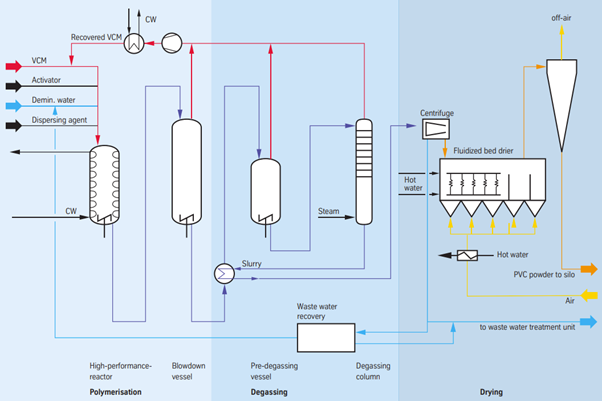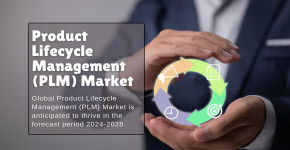 Launch apps instantly. Claim $200 credits on DigitalOcean
Launch apps instantly. Claim $200 credits on DigitalOcean
Exploring the Versatility and Manufacturing of PVC: From Construction to Consumer Goods (2023-2034)
Written by ChemAnalyst Data » Updated on: April 19th, 2024

Polyvinyl chloride (PVC) stands as a ubiquitous polymer in our modern world, finding its way into a myriad of applications across various industries. From construction to healthcare, PVC's versatility and durability make it an essential material in our daily lives. However, alongside its widespread use, PVC has also faced scrutiny due to environmental concerns. In this blog post, we'll dive into the multifaceted nature of PVC, exploring its applications, benefits, and manufacturing processes. The global Poly Vinyl Chloride (PVC) market is likely to flourish with a CAGR of 3.76% by the year 2034.
Introduction
Polyvinyl Chloride (PVC) stands out as a flexible and cost-effective thermoplastic polymer. Possessing attributes such as flame resistance, electrical insulation, and resistance to water and heat, PVC demonstrates durability and lightweight characteristics. These qualities render PVC highly favored within the construction sector for various applications including fencing, window frames, flooring, railing, and decking, as it can endure pressure and damage while maintaining its integrity. PVC offers numerous benefits for construction applications. It is cost-effective, with competitive pricing enhanced by durability and low maintenance. PVC's strength, lightweight nature, and abrasion resistance make it ideal for building and construction. Additionally, it's easy to handle, allowing for simple installation and customization. Moreover, PVC is environmentally friendly and non-toxic, meeting international health and safety standards. Overall, PVC provides excellent cost-performance advantages, durability, ease of handling, and environmental safety, making it a preferred choice for various construction projects.
Flexible PVC has the following uses:
· Plumbing: Flexible PVC pipes are commonly used for plumbing applications due to their ability to bend and adapt to different angles, reducing the need for fittings.
· Electrical Wiring: PVC is used to insulate electrical wires and cables, providing protection against electrical shocks and damage.
· Medical: Flexible PVC is used in medical devices such as IV tubing and blood bags due to its biocompatibility and flexibility.
· Packaging: PVC films and sheets are used in packaging applications for their flexibility and ability to conform to various shapes.
Rigid PVC has the following uses:
· Construction: Rigid PVC is widely used in construction for applications such as window frames, pipes, siding, and roofing due to its durability, weather resistance, and strength.
· Automotive: Rigid PVC is used in automotive interiors, including door panels, dashboards, and trim, for its impact resistance and aesthetic appeal.
· Signage: PVC sheets are commonly used for signage due to their rigidity, durability, and ability to withstand outdoor conditions.
· Consumer Goods: Rigid PVC is used in various consumer goods such as toys, furniture, and household items due to its affordability and versatility.
Manufacturing Process
PVC is manufactured in specialized mixing facilities through the polymerization of vinyl chloride. This process entails the gradual conversion of uniform monomers, initially small and lightweight particles, into larger molecules termed polymers. The production of polyvinyl chloride incorporates several key components, including liquid dichloroethane (ethylene chloride, dichloroethane), an aqueous solution of potassium hydroxide, plasticizers, stabilizers, fillers, and pigments.
Polyvinyl chloride can be obtained through three primary processing methods:
· Bead polymerization: This method involves suspension fixatives, resulting in a final product resembling beads in shape and structure.
· Suspension polymerization: Utilizing surfactants, initiators, and stabilizers, this process facilitates rapid reaction.
· Mass polymerization: Widely employed due to minimal raw material impurities, this method is characterized by its efficiency in producing polyvinyl chloride.
Suspension polymerization is the predominant method for manufacturing PVC. Initially in this process, Vinyl Chloride Monomer (VCM) is pressurized and liquefied, then introduced into the polymerization reactor containing suspending agents and water. High-speed agitation generates small VCM droplets. A polymerization initiator is subsequently introduced to produce PVC under controlled temperatures (40 - 60°C). The resulting PVC is obtained in slurry form which undergoes processes such as monomer removal, dehydration, drying, and particle size control through screening to yield Polyvinyl Chloride in white powder form. Any unreacted VCM is completely recovered through stripping, purified, and recycled as raw material for the reactor. This type of PVC resin, produced via suspension polymerization, is known as Suspension Polyvinyl Chloride, playing a predominant role in PVC manufacturing due to its effectiveness and widespread utilization.
Applications of Poly Vinyl Chloride (PVC):
1. Pipes & Fittings
PVC pipes exhibit rigidity and affordability, along with remarkable resistance to impact, water, weather, chemicals, and corrosive conditions. Their breakage rates are substantially lower, approximately one percent, compared to cast metal systems. These pipes find utility in various applications including sanitation, underground wiring, and water distribution.
2. Packaging
Because it is durable, dependable and light weight, flexible PVC helps packaging do its job to maintain the integrity of the products inside, including medicines. Clear vinyl is used in tamper-resistant over-the-counter medications and shrinkwrap for consumer products. Rigid vinyl film is used in blister and clamshell packaging to protect medicines, personal care products and other household goods.
3. Cables & Wires
PVC excels in enduring harsh conditions within building walls, enduring temperature fluctuations and moisture for the building's lifespan. Thus, it's widely relied upon in electrical wiring and cables, prized for its resilience and longevity in challenging environments.
4.Windows & Sliding
Poly Vinyl Chloride (PVC) is essential for crafting housing and components in televisions, computers, and IT equipment. Its lightweight and moldable nature allow for intricate designs that balance functionality and aesthetics. Additionally, Poly Vinyl Chloride (PVC)'s durability ensures long-term protection for internal components, enhancing product reliability.
Market Outlook:
The global Poly Vinyl Chloride (PVC) market is anticipated to reach approximately 80.5 million tonnes by 2034. Rising global population and urbanization drive the growing demand for PVC. Its strength, resistance to moisture, and abrasion make it ideal for various applications like cladding, roofing, and wall covering. As urban areas expand, the need for durable materials escalates, further bolstering PVC's popularity. Its versatility and reliability position it as a preferred choice for construction projects worldwide, meeting the demands of modern infrastructure development. This surge in demand underscores PVC's significance in addressing the evolving needs of urbanization and population growth, driving its widespread adoption across diverse sectors.

Poly Vinyl Chloride (PVC) Key Market players
Significant companies in the Global Poly Vinyl Chloride (PVC) market are Xinjiang Tianchen Chemical, Xinjiang Huatai Heavy Chemical, Sinopec Qilu Petrochemical, Yibin Haifing Herui, Tianjin Dagu Chemical, Anhui Huasu Co., Erdos Chemical Group ChlorAlkali Chemical, Inner Mongolia Yili Chemical, Inner Mongolia Jilantai Salt Chemical, and Tangshan Chlor Alkali.
Challenges and Opportunities
While the Poly Vinyl Chloride (PVC) market also faces a few challenges that impact its growth.
· Environmental Concerns: PVC production and disposal processes can generate harmful pollutants and toxic byproducts, leading to environmental degradation and health risks. Increasing regulatory scrutiny and consumer awareness regarding environmental sustainability pose challenges to the growth of PVC market.
· Competition from Alternative Materials: PVC faces competition from alternative materials, such as bio-based plastics and other polymers, which offer perceived environmental advantages or specific performance properties. This competition limits PVC's market share and growth opportunities in certain applications.
Conclusion:
In conclusion, the Poly Vinyl Chloride (PVC) market is poised for continued growth and evolution despite facing various challenges. PVC remains a widely used and versatile material with applications spanning across multiple industries, including construction, automotive, healthcare, and packaging. Its unique properties, such as durability, flexibility, and cost-effectiveness, continue to make it a preferred choice for manufacturers and consumers alike. Plumbing pipes represent one of the most prominent applications of Rigid PVC, contributing to its widespread adoption in the construction and plumbing sectors. Rigid PVC's resistance to water makes it suitable for various purposes such as windows, doors, wire coverings, and wastewater pipes. Additionally, rigid PVC can be utilized to manufacture plastic film, available in matte, opaque, or glossy finishes, and offered in clear or colored varieties. Conversely, flexible polyvinyl chloride (FPVC) offers adaptability, often modified from its rigid form through the addition of plasticizers or other additives. FPVC is commonly employed in plastic packaging and can be molded into unique shapes like jar lids. It's particularly beneficial for unconventional packaging needs and can meet FDA standards for food or drinking water applications. FPVC also finds utility in home construction, particularly in flooring, roofing, and wall covering, noted for its ability to transport a wide range of substances including chemicals, liquids, and gases. Additionally, advancements in recycling technologies and the development of bio-based alternatives offer promising avenues for the future of PVC.
Copyright © 2024 IndiBlogHub.com Hosted on Digital Ocean








Post a Comment
To leave a comment, please Login or Register